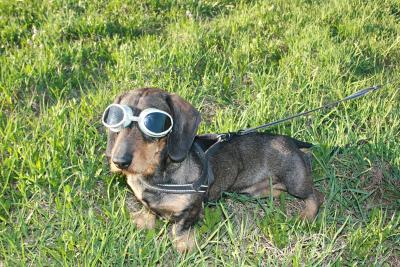Dogs have served humans as guards, guides, retrievers, shepherds and companions for more than 10,000 years. Now geneticists are enlisting their help in another task – identifying the genetic roots of diseases that affect both man and beast.
Dogs suffer from a number of inherited eye conditions; the progression of their symptoms and gradual vision loss have been found to mirror various similar disorders in humans. One example: cone-rod dystrophies, which rob humans and dogs of their vision by destroying both the cone cells that pick out images and colors in bright light and the rod cells, which work best under low lighting conditions.
Norwegian and Swedish researchers have used a genome-wide approach to identify a genetic mutation in standard wire-haired dachsunds that is responsible for early onset cone-rod dystrophy, known as CRD. Their results, published online today in the journal Genome Research, could help researchers studying similar cone-rod disorders in humans to find the genetic basis of those conditions. About one person in 40,000 is affected by a form of cone-rod dystrophy.

The team used a family of dachshunds, several of whom had CRD. Lingaas and his colleagues used a genome-wide analysis approach on 26 full- and half-siblings, studying nearly 50,000 gene variants much the same way 23andMe uses an array of gene variants to analyze customer DNA. They studied the dogs in sibling pairs – where one litter mate had CRD and the other had normal vision – to find out what genetic differences might be responsible for the eye condition.
The researchers narrowed their focus to four candidate genes, and ultimately identified a deletion in part of the NPHP4 gene as the cause of the dogs’ blindness.
“This [NPHP4] gene has been associated with a combination of kidney and eye disease in human patients,” said lead researcher Frode Lingaas in a statement. “Here, we found a mutation that affects only the eyes, suggesting that this gene might be a candidate for human patients with eye disease only.”
Gene therapy treatments based on other associations have already been tried in dogs with cone-rod dystrophies. Researchers hope such treatments could some day be applied to similar conditions in humans.
“Assuming that NPHP4 has the same function in humans and dogs,” Lingaas and his colleagues added in their paper, “it will now be interesting to search for mutations in NPHP4 in human CRD patients without kidney disease.”
Image from: Frode Lingaas, Norwegian School of Veterinary Science



